Being a soccer play in my younger days and having many sports injuries, tears, ligament damage, fractures and soft tissue injuries I have had my fair share over the years. I learned through my own injuries and 20 years being in practice working on tens of thousands of patients. Now with that said, you have a unique body, personality, a past and belief system and that plays into your ability to recover quickly, or not. We also all of us need the right tools, the know how and the skilled guidance to help us out.
Here are some of what I do and prescribe to patients:
1 ) Dermal Magnesium Application – Years ago I discovered that the majority of us that live in North America are severely depleted in the vital mineral. Our soils have been depleted with modern farming methods, our water is “dead” and chlorinated and we don’t spent time in the natural mineral abundant waters/sea/lakes/hot springs. What I have noticed for myself when I was swimming in the oceans on vacation, everything felt better. Initially I attributed to no stress, but then realized it was the water and what’s in it, rich source of magnesium chloride and other trace minerals.
Magnesium is needed for more than 300 biochemical reactions in the body. It helps to maintain normal nerve and muscle function , supports a healthy immune system, keeps the heartbeat steady, and helps bones remain strong . It also helps adjust blood glucose levels and aids in the production of energy and protein . I’ve started to experiments with salts in the bath at home and tried all of them to be honest. One day I came across a colleague who raved about how her husband’s chronic restless leg syndrome and Insomnia disappeared after 3 weeks of application of Magnesium Chloride from a source of an ancient seabed in europe (Ancient Minerals).
I asked for some salts and took a bath, it was a game changer from day one ! As i had so much experience with other salts, they did not compare to to this source. I use it for myself, my family, my pets and have used it clinically for 10 years now with great success. What I understand that magnesium chloride works like a conductor to stimulate the activity of the cells that repair and regenerate your body, that’s why it is so effective. A bath of 2 cups of it for 40 minutes (or a foot soak 1 cup) is one of the most rejuvenating experiences you can have. Why 40 minutes? 20 minutes for it to go through you skin and soft tissue, then another 20 minutes to go through your circulatory system for optimal effects. Clinically I also use a spray and a lotion with it on myself and patients and have them use it for home care.
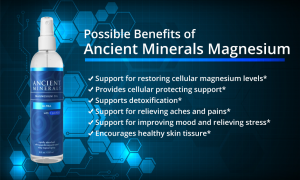
2) Collagen + Strontium – Breaking bones over the years I was introduced to a collagen product (Canadian made) and the an heralded mineral Strontium by a woman who had Lupus (an autoimmune disease) and had severe deterioration in her bones and cartilage. She became a know herbalist and I had my practice at the time right above her store so i would frequent it often when needed and for her incredible creations. One day i came to her after fracturing my humerus bone and that she had a plastic surgery to her face has her usual droopy skin and reddish butterfly shape breakout (typical of lupus) improved so dramatically.
I asked her. ” Kathleen, did you have a plastic surgery done?”
She laughed and brought me her bone density scans and two products, the collagen product and Strontium. The before and after scans showed significant improvement in a matter of 6 months of primarily using these two products. I boughts them and within 2 months was able to resume full time work, when I was told it would take me 6- 8 months by the orthopedic doctor.
Collagen is the matrix of your connective tissue and we lose it with age and don’t consume it enough. It is the glue of the body and helps to stimulate bone growth, skin, hair, nails and gut health. Strontium is proven to help specifically with the regeneration of bone cells. I have recommend these products to thousands of patients and if taken consistently as instructed the results can be phenomenal.
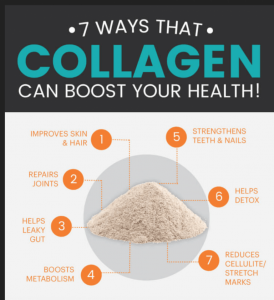
3) Powerful Anti-inflammatories – One of the biggest pandemics is addiction to pain medication and opioids in North America and here in Vancouver, British Columbia it is a massive problem. The root to dependency on drugs stems from traumatic injuries that leave the person in chronic pain. Initially the pain medications are like a lifeline, there to be used so you won’t be overwhelmed with pain. But many get addicted to these pain medications and it transition to harder street drugs and opioids. I have seen that a lot over my 20 years as a therapist and it is only getting worse it seems like. Now herbs have been used for thousands of years with great success for traumatic injuries and chronic pain. I can make a huge list here but will just name a few that have been time tested and proven by science to be just as effective as meds if not more.
White willow bark – comes from the willow tree and it what is known as the natural Aspirin it is effective not only for pain but for headaches too. It is also used to relieve menstrual cramps and bring down a fever. The salicin inside willow bark works the same way as aspirin, by reducing inflammation and pain as it enters your bloodstream. Because of the anti-inflammatory properties of willow bark, it may be especially effective in combating joint pain.
Tumeric & Ginger – Two roots of the same family are the of the powerhouses when it comes to chronic pain, systemic inflammation and many chronic diseases. Chronic inflammation is thought to play a central role in the development of conditions like heart disease, cancer, and diabetes.It can also worsen symptoms associated with autoimmune conditions, such as rheumatoid arthritis and inflammatory bowel disease.Ginger and turmeric have powerful anti-inflammatory properties, which could help decrease pain and protect against disease.One study in 120 people with osteoarthritis found that taking 1 gram of ginger extract per day for 3 months effectively reduced inflammation and decreased levels of nitric oxide, a molecule that plays a key role in the inflammatory process Similarly, a review of 9 studies showed that taking 1–3 grams of ginger per day for 6–12 weeks decreased levels of C-reactive protein (CRP), an inflammatory marker .
Meanwhile, test-tube and human studies indicate that turmeric extract can decrease several markers of inflammation, with some research noting that it may be as effective as anti-inflammatory medications like ibuprofen and aspirin., (One review of 15 studies also observed that supplementing with turmeric could reduce levels of CRP, interleukin-6 (IL-6), and malondialdehyde (MDA), all of which are used to measure inflammation in the body .
Both ginger and turmeric have been studied for their ability to provide relief from chronic pain.
- Studies show that curcumin, the active ingredient in turmeric, is especially effective at decreasing pain caused by arthritis .
- In fact, a review of 8 studies found that taking 1,000 mg of curcumin was as effective at reducing joint pain as certain pain medications in those with arthritis .
- Another small study in 40 people with osteoarthritis showed that taking 1,500 mg of curcumin daily significantly reduced pain and improved physical function, compared with a placebo .
- Ginger has also been shown to decrease chronic pain associated with arthritis, along with several other conditions .
- For example, one 5-day study in 120 women noted that taking 500 mg of ginger root powder 3 times daily reduced the intensity and duration of menstrual pain .
- Another study in 74 people found that taking 2 grams of ginger for 11 days significantly reduced muscle pain caused by exercise .
Support immune function
- Many people take turmeric and ginger at the first sign of sickness, hoping to enhance immune function and sidestep cold or flu symptoms.
- Some research shows that ginger, in particular, may possess powerful immune-boosting properties .
- One test-tube study indicated that fresh ginger was effective against human respiratory syncytial virus (HRSV), which can cause respiratory tract infections in infants, children, and adults .
- Another test-tube study found that ginger extract blocked the growth of several strains of respiratory tract pathogens .
- A mouse study also noted that taking ginger extract blocked the activation of several pro-inflammatory immune cells and decreased symptoms of seasonal allergies, such as sneezing .
- Similarly, animal and test-tube studies have shown that curcumin possesses anti-viral properties and can help reduce the severity of influenza A virus .
- Both turmeric and ginger can also decrease levels of inflammation, which can help improve immune function .
- However, most research is limited to test-tube and animal studies using concentrated doses of turmeric or ginger.
- More research is needed to determine how each can affect human immune health when consumed in normal food amounts.
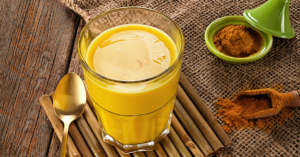
4) Nervous system Regulation – Your nervous system is always a part of your pain and your healing. It is the “Information System” that connects mind to body.
The brain and spinal cord receive signals from your nerves and also send out massive patterns of signals to our muscles that control our arm, leg, and spine movements. These signal patterns develop over years and explain how we learned to walk, run, ride a bicycle, dribble a basketball, and even play a musical instrument. The signal patterns constantly update the spinal cord to include the status of sensors that detect our muscle flexibility, strength, and endurance.
We think chronic pain starts when these sensors in your muscles (peripheral signals), misfire or malfunction, and your brain and spinal cord adapt improperly to those malfunctioning sensors and become “short-circuited.” In a way, what happens is the spinal cord amplifies a normally harmless pain signal, which creates a loud chronic pain signal.
When your pain signals become amplified, your central nervous system latches onto these signals or recognizes them as intensely painful. This makes it so that even harmless stimuli appear to be intense pain signals.
I spent 25 years of my personal and professional life understanding chronic pain, the “chronic condition” and realize that there are not just one solution to pain , but an integrative approach is essential and often time a small team around you working closely. That’s why I ran an Integrative centre for 10 years and saw the benefits daily with patients working with team, but that is rare and not often do-able.
NeuroPath Reset Method – Is a true BodyMind t approach that is more in line with the Biopsychosocial Model but includes also the spiritual element too. We work with the whole person and every system in the body is taken into account, especially the nervous system and the viscera. We store our suffering, traumas, memories and experiences and the body manages together with the mind through the nervous system and the organs. All chronic pain has an emotional, psychological and even spiritual components to it and the is the complexity.
5. Breathwork & meditation – When I was dealing with my chronic pain experience in my early 20’s and tried everything in the book for it and nothing worked, that’s when I discovered meditation. It was the impetus that propelled me to this journey that I am on. It was a game changer for me and still is as it enables me to change the states of mind that we can all fall into unconsciously, based on learned patterns that were created because of conditioning and our pain. With practice you learn how to be the observer, not the reaction to. ..sensation, thought, emotion, pain, story, noise. Highly present, non reactive and aware of your intelligence (not intellect).
The 5 principles of the method (5 R’s) are:
- Realign
- Reset
- Release
- Resilience
- Re-integration
Breathwork is a big part of meditation as it as a direct effect on your nervous system response that creates, the fight, flight, or freeze response, I call it “catching your breath”! Why? It is because we lose our breath as we became unconscious and reactive. The breath becomes shallow and stressed and with it your body and mind.

I have studied with the the man know as “Ice Man”, Wim Hoff to learn how breathwork and cold exposure can create resilience and boost your immune system. It was personal challenge has I had strong aversion to cold and i blamed the cold winter, water and weather all the time. It has been another game changer for me and improved my stamina, vitality and resilience to not only the cold, but fear. He is one of the most studied person by science because he has achieved incredible feats that are re-writing everything we know so far about the body.
Here is the website to learn more:
https://www.wimhofmethod.com/breathing-exercises
I have also studied and practiced Kundalini Yogic Breathwork which has transformative effects and helped me through my trauma work.
Qigong breath methods from chinese medicine
Yogic breathwork for spiritual development and consciousness awareness.
Breathwork for anxiety and panic attacks that I developed combining, breath-method , acupressure and tapping.
Here is another great resource link about breathwork and chronic pain:
https://paindoctor.com/breathwork-for-chronic-pain/
There are many other tips but these 5 foundational pieces I have used for myself and 10,000’s of patients over the years with great success. Try implementing one, or two and experience for yourself. We are all different and unique and you must be open to explore what works for you at this time in your life and state that you are in.
If you have any questions please don’t hesitate to send me an email at [email protected] .
If you know of someone who is struggling with pain please forward this article to them.

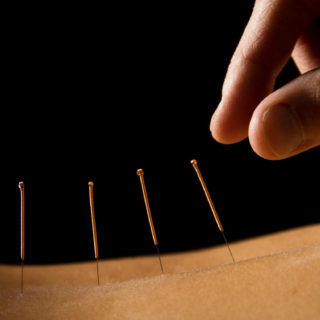



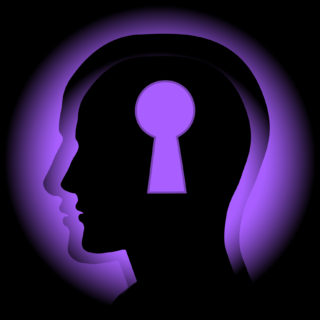
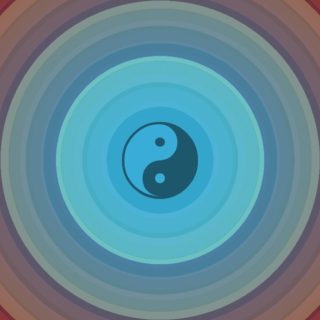




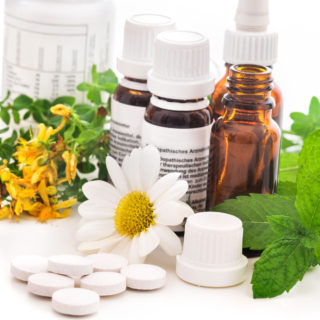


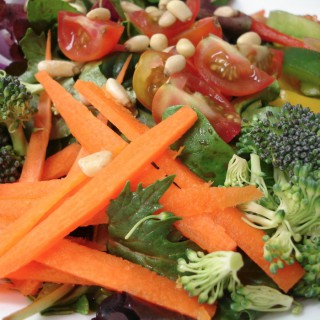



No Comments
Be the first to start a conversation